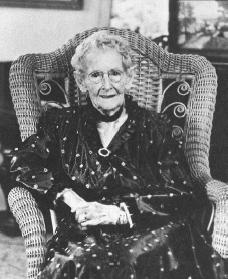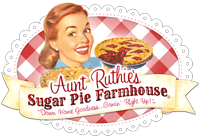Monday, August 9, 2010
I started the book this week

Tuesday, June 15, 2010
Louisa Yeomans King

| Louisa Yeomans King |
1863-1948 From: United States: Michigan, New Jersey, New York Fields: Agriculture and Horticulture Keywords: co-founder of the Garden Club of America |
| Louisa King, the first president of the Women's National Farm and Garden Association, was born in 1863 in Washington, New Jersey, U.S.A. Her interest and dedication to gardening were influenced by her mother's home garden where over 200 herbs were grown. King was in 1913 one of the founders of the Garden Club of America and from 1914 to 1921 she served as president of the Woman's National Farm and Garden Association. In 1915 she published The Well-Considered Garden and later on she published several more gardening books. In 1921 she received the George White Medal of the Massachusetts Horticultural Society. This was the highest gardening honor in the U.S. and she was the first woman to receive it. She was also a fellow of the Royal Horticultural Society of Great Britain. Louisa King died in 1948 in Milton, Massachusetts. Contributed by Danuta Bois, 1996. |
Friday, June 4, 2010
Lady Bird Johnson

Claudia Alta "Lady Bird" Taylor Johnson--December 22, 1912-July11, 2007
Claudia Alta Taylor was born in Karnack, Texas, a town in Harrison County, near the states border with Louisiana. Her birthplace was "The Brick House," a former slave plantation mansion on the outskirts of town which her father had purchased shortly before her birth. Nearly all of both her maternal and paternal forebears had arrived in the Virginia Colony during the late 17th and early 18th centuries. Her father was a native of Alabama and primarily of English Ancestry with small amounts of Welsh and Danish; her mother was also a native of Alabama and of English and Scottish decent.
Lady Bird was the First Lady of the United States from 1963 until 1969 during the presidency of her husband Lyndon B. Johnson. Throughout her life, she was an advocate for beautification of the nations cities and highways. Leaving the White House in 1969 and her husband's death in 1973, Lady Bird became an entrepreneur, creating the $150 million LBJ Holdings Company, and was a recipient of the Presidential Medal of Freedom and the Congressional Gold Medal, the highest of civilian honors.
Saturday, May 22, 2010
Laura Ingalls Wilder-Author

Laura Elizabeth Ingalls was born February 7 1867 , near the village of Pepin in the "Big Woods" of Wisconsin. In Laura's early childhood, her father settled on land not yet open for homesteading in what was then the Indian Territory near Independence, Kansas--an experience that formed the basis of Ingalls' novel Little House on the Prairie. Within a few years, her father's restless spirit led them on various moves to a preemption claim in Walnut Grove, Minnesota, living with relatives near South Troy, Minnesota, and helping to run a hotel in Burr Oak, Iowa. After a move from Burr Oak back to Walnut Grove, where Charles Ingalls served as the town butcher and Justice of the Peace, Charles accepted a railroad job in the spring of 1879 which led him to eastern Dakota territory, where he was joined by the family in the fall of 1879. Over the winter of 1879-1880, Charles landed a homestead, and called DeSmet, South Dakota, home for the rest of his, Caroline, and Mary's lives. After staying the cold winter of 1879–1880 in the Surveyor's House, the Ingalls family watched the town of DeSmet Dakotas , was later described by Wilder in her book, The Long Winter. Once the family was settled in DeSmet, she attended school, made many friends, and met homesteader Almonzo Wilder (1857–1949). This time in her life is well documented in the Little House Books.
Shortly before her sixteenth birthday, Laura accepted her first teaching position, teaching three terms in one-room schools, when not attending school herself in DeSmet. She later admitted that she did not particularly enjoy teaching, but felt the responsibility from a young age to help her family financially, and wage earning opportunities for females were limited. Laura stopped teaching when she married Almanzo Wilder, whom she called Manly, on
The first few years of marriage held many trials. Complications from a life-threatening bout of diphtheria left Almanzo partially paralyzed. While he eventually regained nearly full use of his legs, he needed a cane to walk for the remainder of his life. This setback, among many others, began a series of disastrous events that included the death of their unnamed newborn son, the destruction of their home and barn by fire, and several years of severe drought that left them in debt, physically ill, and unable to earn a living from their 320 acres of prairie land. The tales of their trials at farming can be found in The First Four Years, a manuscript that was discovered after
About 1890, the Wilders left DeSmet South Dakota and spent about a year resting at Wilder's parents' prosperous
In 1894, the hard-pressed young couple moved a final time to Mansfield, Missouri, using their savings to make a down payment on a piece of undeveloped property just outside of town. They named the place Rocky Ridge Farm. What began as about 40 acres of thickly wooded, stone-covered hillside with a windowless cabin, over the next 20 years evolved into a 200-acre relatively prosperous poultry, dairy, and fruit farm. The ramshackle log cabin was eventually replaced with an impressive 10-room farmhouse and outbuildings.
The couple's climb to financial security was a slow process. Initially, the only income the farm produced was from wagon loads of firewood Almanzo sold for 50 cents in town, the result of the backbreaking work of clearing the trees and stones from land that slowly evolved into fertile fields and pastures. The apple trees did not begin to bear fruit for seven years. Barely able to eke out more than a subsistence living on the new farm, the Wilders decided to move into nearby
Wilder's parents visited around this time, and presented to the couple, as a gift, the deed to the house they had been renting in
Almanzo died in 1949 at the age of ninety-two, Laura died at the age of ninety on
Tuesday, May 11, 2010
Willa Cather-Author

Willa Siebert Cather was born on
In 1883 the family moved to Catherton Precinct in Webster County, Nebraska. This region, a broad plateau between the Little Blue and Republican rivers, is known as “The Great Divide. Later that year in 1884- 1885 the family moves again to the county seat in Red Cloud.
Willa was an American author who grew up in
For her novels, Cather turned to the prairie for inspiration.
She received both national and state honors for her writing. In 1973 the U.S. Post Office honored Willa by using her image on a postage stamp. In 1981 the U.S. Mint created the Willa Cather medallion, a half ounce gold coin. And in 1986 Willa was inducted into the
On
Willa Cather
THE TRUTH AND CHARITY OF HER GREAT
SPIRIT WILL LIVE ON IN THE WORK
WHICH IS HER ENDURING GIFT TO HER COUNTRY AND ALL ITS PEOPLE
“…that is happiness; to be dissolved into something complete and great.”
From My Antonia
Saturday, May 8, 2010
Grandma Moses
Anna Mary Robertson was born in Greenwich, New York, on September 7, 1860

In 1887 Anna Mary married a farm worker, Thomas S. Moses, and the couple settled on a farm in Virginia. They had ten children, five of whom died at birth. In 1907 the family moved to Eagle Bridge, New York, where Grandma Moses spent the rest of her life.
It was on this farm in Eagle Ridge that Anna Mary painted her first painting. She was wallpapering her parlor and ran out of paper. To finish the room she put up white paper and painted a scene. It is known as the Fireboard, and it hangs today in the Bennington Museum in Bennington, Vermont. Her husband died in 1927, and her son and daughter-in-law took over the farm. As she aged and found farm work too difficult, Grandma Moses took up embroidering pictures in yarn to fill her spare time. At the age of seventy-six, because of arthritis, she gave up embroidery and began to paint. Her early work was usually based on scenes she found in illustrated books and on Currier and Ives prints (prints made during the 1800s, showing American lives, historical events, and celebrities.
In 1938 Grandma Moses's paintings were discovered by an art collector and engineer, Louis Caldor. He saw a few of her paintings displayed in the window of a drug store in Hoosick Falls, New York, while on vacation. He purchased these, and the next day he bought all the paintings Grandma Moses had at her farm. In October of 1939, three of these paintings were exhibited at the "Contemporary Unknown Painters" show at New York's Museum of Modern Art. Her first one-woman show was held in New York City in 1940 and immediately she became famous. Her second one-woman show, also in New York City, came two years later. By 1943 there was an overwhelming demand for her pictures, partially because her homespun, country scenes brought about wonderful feelings and memories for many people.
Most of Grandma Moses's paintings were done on pieces of strong cardboard, 24 by 30 inches or less. She regularly portrayed happy scenes of rural home life, sometimes picturing herself as a child. She also painted a number of historical pictures, usually about her ancestors, one of whom built the first wagon to run on the Cambridge Pike. In some works figures are dressed in eighteenth-century costumes, as people might have dressed in the country. Certain color schemes correspond to the various seasons: white for winter, light green for spring, deep green for summer, and brown for autumn. Among her most popular paintings are The Old Oaken Bucket, Over the River to Grandma's House, Sugaring Off, and Catching the Turkey.
Grandma Moses worked from memory, portraying a way of life she knew from experience. The people in her paintings are actively engaged in farm tasks, and, although separated, are part of the established order of seasonal patterns. In most paintings the landscape is shown as a large, scenic view and would be completed before the tiny figures were put in. Grandma Moses died on December 13, 1961.


